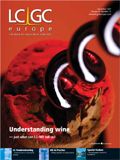Norse Legends
A look at the activities of some of the leading research institutes in the Nordic region.
Research Group: Dr Audrius Maruska, Vytautas Magnus University, Kaunas, Lithuania.
Research Focus: The development and evaluation strategies of new stationary phases and separation methods, particularly microseparations, has been the main focus of Dr Maruska's research group since 1990. The group gained expertise in synthesis and evaluation of the monolithic adsorbents (continuous beds) for capillary format liquid chromatography (cLC) and electrocromatography (CEC). Normal phase capillary electrochromatography (NPCEC) was introduced in 1995 as a suitable method to separate small organic compounds.

Different techniques, including molecular imprinting and self-assembly of supramolecular structures, were used to synthesize the continuous beds.
Capillary format monolithic adsorbents as restricted-access media (cLC RAM) for the direct injection of the biological fluids have been investigated since 2003. Thermoreversible gels for reversed-phase capillary electrochromatography (RPCEC) or chip format electrochromatography were reported. Current developments of monolithic stationary phases for capillary chromatography and electrochromatography include reversed-phase (RP) and normal phase (NP) hydrophilic interaction chromatography (HILIC), chiral chromatography, affinity chromatography (AC), restricted access (RAM) and gradient stationary phases for isocratic elution.
They began extensive research on phytochemical analysis, chemotyping, epigenetic and molecular investigation of plants using different separation methods in 2002. This project investigates the secondary metabolites of plants, evaluation of their radical scavenging activity, and the development and coupling of different analytical methods for on-line analysis of biologically active analytes. The group has organized more than five summer schools and intensive courses on separation methods and their application. In August 2007 the group organized the 4th Nordic Separation Science Society (NoSSS) International conference at Vytautas Magnus University, Kaunas.
Facilities at the institute include supercritical fluid extraction (SFC), solid-phase microextraction (SPM), gas chromatography (GC), high performance liquid chromatography (HPLC) using ultraviolet visible (UV/vis), electrochemical detection (ED), refractometric detection (RD), fluorescence (FD), mass spectrometry (MS), electromigration, capillary electrophoresis (CE) and capillary electrochromatography (CEC), UV/vis spectroscopy and fluorescence spectroscopy (FS), microsynthesis, optical and fluorescence microscopy and inverse size exclusion chromatography (/SEC) porosimetry equipment.
E-mail: a.maruska@gmf.vdu.lt
Research Group: Dr Susanne K. Wiedmer, Laboratory of Analytical Chemistry, Department of Chemistry, University of Helsinki, Finland.
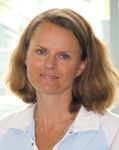
Research Focus: The focus of the Wiedmer research group is to obtain a deeper understanding of the interactions taking place in biomembranes. Specific attention has been given to lipid–analyte interactions, including analytes ranging from low-molar mass (MM) drugs to proteins with molar masses up to 80 kDa.
In these studies liposomes composed of commercial, natural or synthetic lipids or lipids extracted from biomatrices have been used. Liposomes are microscopic spherical vesicles that form when phospholipids are hydrated. Typically, several of these vesicles will form within each other in diminishing size, creating a multilamellar structure of concentric phospholipid spheres separated by layers of water. The group decided to use unilamellar vesicles with sizes ranging from 30–120 nm prepared by extrusion or probe-sonication.
The liposomes are made of phosphatidylcholines combined with other phospholipids, sphingolipids, cholesterol and PEGylated-lipids. The techniques for obtaining information on lipid–analyte interactions and on liposomes have included capillary electromigration techniques, field flow fractionation (FFF), fluorescence spectroscopy (FS) and photon correlation spectroscopy (PCS), monolayer measurements, light scattering, quartz crystal microbalance (QCM) and microscopic techniques.
Capillaries for electrophoresis have been coated with lipids [i.e., capillary electrochromatography (CEC)] or filled with lipid vesicle dispersions [i.e., electrokinetic capillary chromatography (ECC)]. There has been a lot of research on factors affecting the stability of lipid coatings on fused silica capillaries. Studies on the effect of capillary pretreatment, lipid composition, solvent, pH and coadditives on the ability of lipid vesicles to attach to the fused silica capillary wall have been performed. Applications have included interactions between low molar mass (MM) drugs or proteins and lipid membranes, chiral separations of enantiomers by proteins embedded in lipid membranes and study of sterically stabilized PEGylated vesicles. Recent research has focused on the effect of liposome composition and liposome size on the arrangement of lipids and lipid vesicles on silica surfaces.
E-mail: susanne.wiedmer@helsinki.fi
Research Group: Dr Chem. Helena Kaszoka, Laboratory of Chromatography, Latvian Institute of Organic Synthesis, Riga, Latvia.

Research Focus: The Latvian Institute of Organic Synthesis (LIOS) was founded in 1957 to perform research in organic chemistry, molecular biology and bioorganic chemistry. High-performance liquid chromatography (HPLC) is one of the major analytical techniques for the analysis and separation of the organic substances. The Laboratory of Chromatography (LOC) deals with the development of methods for quality control (QC) of organic substances (candidates for new drugs) synthesized in the Institute. This means that HPLC methods for the analysis of these substances are not available in literature.
The purpose of this group's research is to investigate the relationships that determine the behaviour of solutes under study in different chromatographic systems and to increase separation selectivity.
Reversed-phase (RP) liquid chromatography (LC) is the most popular LC mode. However, for some samples separation by RP mode is ineffective. Normal-phase (NP) liquid chromatography can be an alternative approach to optimize HPLC separation. The use of NP separations in combination with RP ones can offer additional possibilities in the QC of organic substances. Unfortunately, adsorption is the dominating retention mechanism under NP mode, therefore a common problem with unmodified silica columns is that polar compounds often show broad, tailing peaks, especially for basic components.
As well as the well-known HPLC modes a new normal-phase mixed partition-adsorption (MPA) mode was developed and used to create HPLC methods. MPA systems show a good peak symmetry on all silica types. In the MPA mode unmodified silica is used as a stationary phase and a mixture of two or three solvents with a limited mutual solubility (a mobile phase is saturated only partially: 50–70%) is used as a mobile phase. It was established that the stationary liquid phase was generated dynamically in the pores of silica, even in the mobile phases that are only partially saturated with the polar component. The retention process cannot be considered as a simple adsorption but a rather complex mixed partition–adsorption process involving liquid–liquid partition into stationary liquid phase developed from the eluent. Such MPA systems are a good choice not only to improve peak symmetry for polar solutes on silica columns but also to enlarge the number of chromatographic systems in HPLC, especially if a system with a specific selectivity is needed.
E-mail: helena@osi.lv
Research Group: Prof. Audrius Padarauskas, Department of Analytical and Environmental Chemistry, Vilnius University, Vilnius, Lithuania.
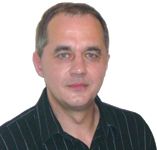
Research Focus: The primary focus of the group is research in the field of separation science and covers high-performance liquid chromatography (HPLC), capillary electrophoresis (CE) and gas chromatography (GC). There are two main sections in the group led by Prof. Padarauskas (group head) and Prof. Vida Visckasckaite.
For the past 10 years, Prof. Padarauskas' main scientific interest has focused on the development of capillary electrophoresis (CE) and high performance liquid chromatography (HPLC) techniques for the analysis of inorganic and low-molecular-weight organic compounds with an emphasis on the development of new strategies for selectivity control, derivatization and preconcentration and element speciation. Main projects include the development and application of dual-opposite injection CE for the simultaneous determination of anions and cations, investigation of in-capillary derivatization using a zone-passing technique for the speciation studies and application of complex-forming equilibria for HPLC and CE separation of metal species.
Recent work has focused on the investigation of water-soluble polymers as capillary coatings and pseudostationary phases in capillary electrokinetic separations and the development of headspace water-based liquid-phase microextraction (LPME) for the isolation of volatile analytes from complex matrices and the subsequent CE determination of these species.
Prof. Visckasckait. e's research focuses on the development and application of miniaturized sample preparation techniques, such as solid-phase microextraction (SPME) and LPME coupled with GC. Several alternative SPME fibre coatings were investigated including silicone glue, carbon nanotubes and conventional HPLC sorbents. Special focus is given to the investigation of microextraction with in-fibre/in-drop derivatization of amino and fatty acids.
E-mail: audrius.padarauskas@chf.vu.lt
Research Group: Prof. Mihkel Kaljurand, Institute of Chemistry, Faculty of Science, Tallinn University of Technology, Tallinn, Estonia.

Research Focus: Prof. Mihkel Kaljurand's research group consists of seven researchers and ten graduate students. It is mainly supported by Estonian government grants and some EU funds. It is focused on the development of separation protocols, instrumental aspects and applications of capillary electrophoresis (CE).
The group has developed various non-aqueous buffer systems with ionic liquid additives for the separation of non-soluble compounds using capillary elctrophoresis (CE). The group is also involved in the development and application of novel miniaturized sampling systems for CE, which can be used to monitor the reactions in an electrophoresis capillary in real time.
Another project involves the analysis of bioactive compounds (polyphenols and vitamins) from biological sources (plant and tissue extracts) to determine their antioxidative activity. Methods to determine the composition of the extracts from wild and domestic berries, tomato skin and eggplant using capillary electrophoresis (CE) with diode array detection have been developed. The team has also optimized the extraction process by using novel environmentally friendly solvents such as CO2. The identification of key polyphenols has led to the development of new selective assays for the determination of the antioxidative power of various extracts and these are compared with the results of commonly used, non-selective assays.
E-mail: mihkel@chemnet.ee
Research Group: Carl-Henrik Brogren, Cellular and Metabolic Research Department of Biomedical Sciences, University of Copenhagen, Denmark.
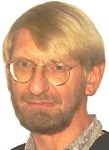
Research Focus: This Danish group focuses on two main areas of biomedical science: diabetes and obesity. This involves immunological and biospecific separations using affinity chromatography (AC) with affinity measurements and also microfluidic cell proteomics.
A biotech company, ImmunoSigns (www.immunosigns.com), founded by Carl-Henrik Brogen in 1996 owns the intellectual property right (IPR) to a monoclonal autoantibody (IC2) that specifically recognizes the pancreatic beta-cell with applications in, for example, medical imaging with PET and SPECT, stem cell research in type-1 diabetes autoimmunity, and the diagnostic in vivo non-invasive quantitative estimation of the residual pancreatic beta-cell mass. These immunotechnological-oriented research activities involve various affinity chromatography (AC) systems to purify, analyse and quantify the diabetic IC2 autoantigen as the precise molecular nature and structure is still unknown, and is the major focus for ongoing research.
The group is also involved in a European consortium aiming to develop medical imaging using the IC2 autoantibody, and is also collaborating with Orsay Physics in Aix en Provence, the University of Rouen and the Ecole Supérieure de Physique et de Chimie Industrielles in Paris to develop a nanofluidic separation and molecular detection method to study cellular proteins from one single cell. This requires expertise in physics, optics, electronics, biology and biochemistry and an international research collaboration is required. Relatively few research groups worldwide have expertise in all of these areas and a virtual network called www.go1cell.net has been established to combine expertise.
The first step in this novel proteomic technology involves nanofluidic isotachophoretic separation of the cellular proteins. Directly after this the sample will finally be analysed by nano-scale single ion mass spectroscopy (Nano-SIMS). The post-column molecular mass analysis by NanoSIMS still requires further development. Currently only the microfluidic level has been reached for the isotachophoretic separation using conductivity, optical digital imaging and laser induced fluorescence (LIF) detection.
E-mail: henrik@brogren.dk
Research Group: Dr Jolanta Liesiene, Department of Organic Technology, Kaunas University of Technology, Lithuania.

Research Focus: The group focuses on the preparation of stationary phases for the low- and medium-pressure preparative chromatography of proteins. A new cellulose-based, semi-rigid matrix named Granocel with pores accessible to macromolecules with molecular masses up to 2 × 106 Da has been developed.
This matrix was used for the preparation of various packings, such as adsorbents for hydrophobic interaction chromatography (HIC), ion-exchangers, chelating sorbents for metal affinity chromatography (MAC) and biospecific adsorbents. The group also co-operates with biotechnologists to examine the separation of biological active materials, particularly the human growth hormone, α-interferon, using Granocel. The effect of pore size and ligand density on the chromatographic performance is being investigated.
The group is currently developing packings for high-pressure liquid chromatography (HPLC) of proteins, by coating macroporous silica with hydrophilic polymers, such as cellulose and its derivatives. Porous silica gels have excellent mechanical properties, however, negatively charged silanol groups cause a strong, even irreversible, nonspecific sorption of proteins. To avoid this disadvantage the silica surface is coated with biocompatible polymers. Coated stationary phases for hydrophobic interaction chromatography (HIC) of the proteins and for lectin affinity chromatography (AC) have also been developed.
E-mail: jolanta.liesiene@ktu.lt
Research Group: Prof. Staffan Nilsson (research leader), Christian Nilsson [nanoparticle-based capillary electrochromatography (CEC)], Arthur Varga (non-aqueous capillary electrophoresis (NACE) of ethanol biomarkers), Loy Alkhafadji (airborne chemistry), Seyed Tabaei, Andreas Bengtsson, Sandra Lemos, Department of Pure and Applied Biochemistry, Lund University, Sweden.

Research Focus: The research group focuses on miniaturized separation techniques. Novel analytical separation methods are being developed for real biological applications. Capillary electrochromatography (CEC) using nanoparticles as a pseudostationary phase for protein separations is one of the main areas of research. This allows the single-use of the stationary phase to avoid carryover effects and long regeneration procedures. Pseudostationary phase capillary electrochromatography (PSP–CEC) enables use of submicron particles, which is not possible in a practical way in packed columns.
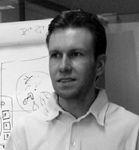
Nanoparticles possess favourable surface area-to-volume-ratio (SA/V) because of their small size, and highly efficient separations in CEC seem possible. The technique has already shown its potential to separate neutral small molecules, such as dialkyl phthalates, with plate numbers as high as 700000 theoretical plates/m. Small neutral molecules have been analysed, but the current main focus is to perform protein separation, protein–protein or protein–ligand interaction studies at physiological conditions in bare fused-silica capillaries. A parallel project involves the development of "monoclonal" plastic antibodies [i.e., molecularly imprinted polymers (MIPs)]. Airborne chemistry is another main area of interest for the group.

E-mail: staffan.nilsson@teknlk.lth.se

Regulatory Deadlines and Supply Chain Challenges Take Center Stage in Nitrosamine Discussion
April 10th 2025During an LCGC International peer exchange, Aloka Srinivasan, Mayank Bhanti, and Amber Burch discussed the regulatory deadlines and supply chain challenges that come with nitrosamine analysis.

